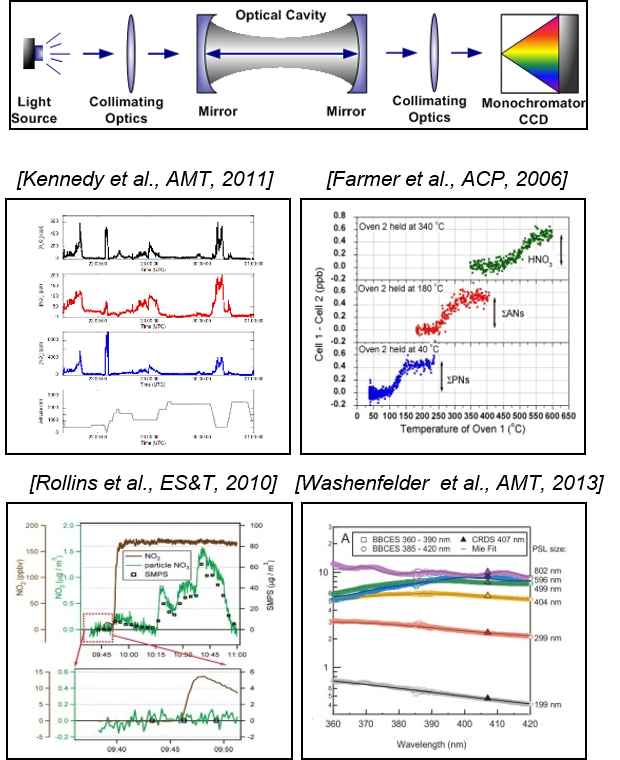Efforts have been made over the last few decades to provide observational constraints on atmospheric oxidation mechanisms which degrade the air quality and influence the climate from oxidants and products measurements.
To joint this movement, ATMOS Lab at GIST in Korea aims to develop novel spectrometric instruments for measuring oxidants (NO, NO2, NO3, halogen oxides) and their products (HONO, NO3, N2O5, ΣRO2NO2, ΣRONO2, HCHO, CHOCHO, etc.) and for deploying those instruments in multi-scale studies focused on air quality research, to investigate the underlying mechanisms of current severe air pollution and seek solutions via the synergetic collaborative works with worldwide groups.

Cavity enhanced absorption spectroscopy(CEAS)
technique with broadband light sources uses optical cavity, and grating spectrometer to acquire spectra with a very long effective absorption path length to enable sensitive measurement of atmospheric trace substances. Spectral fitting methods can be used to retrieve multiple absorbers simultaneously even for species that have significant spectral overlaps in their absorption features. Using LEDs with different wavelength regions, absolute concentrations of many important trace molecules can be measured efficiently.
ACES (Airborne Cavity Enhanced Spectrometer) is one of the representative instruments, built by prof. Kyung-Eun Min at NOAA during her postdoctoral period, based on the CEAS technique. The current version of ACES uses UV and blue LED to measure HONO/NO2 and CHOCHO/NO2 measurement. The measurement capability of ACES can be expanded by using different LED light sources (ex. NO3 and N2O5), thermal-dissociation methods for measuring higher nitrogen oxides (ΣRO2NO2, ΣRONO2), denuder applications for nitrate content in aerosol and even for measurements of their optical properties.